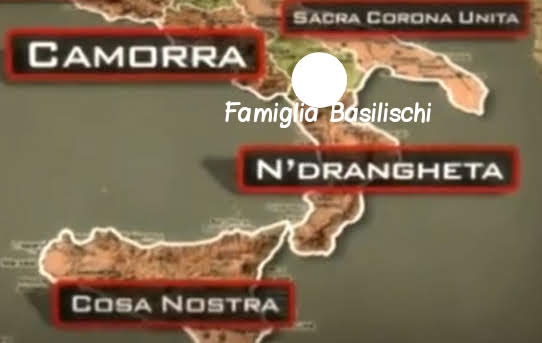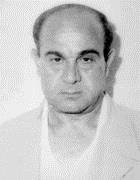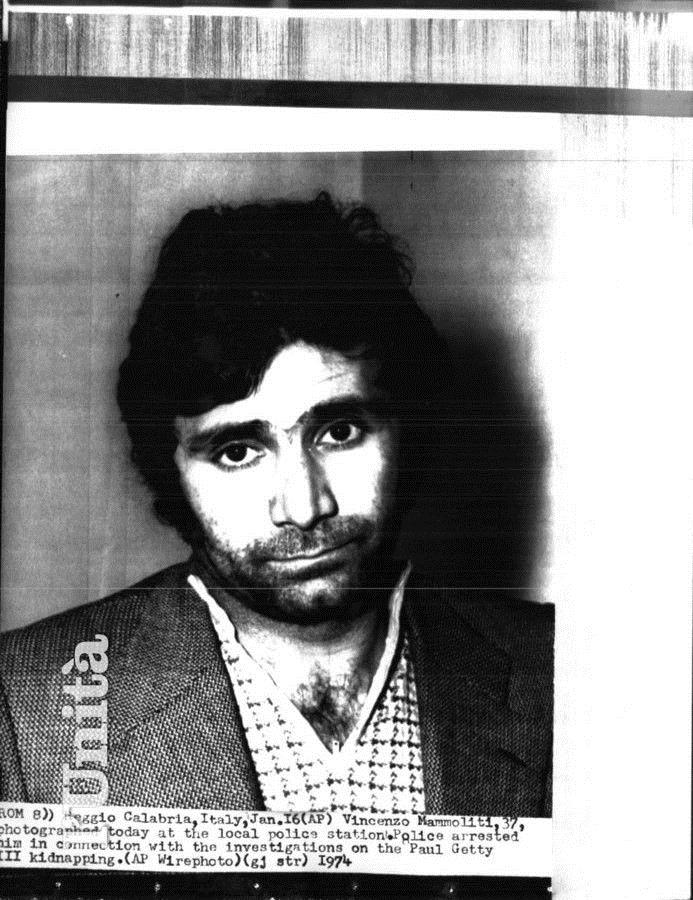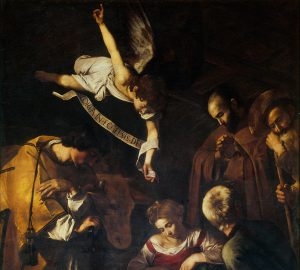To most Mafia aficionado’s the name ‘Lucania’ will no doubt recall one of the Italian-American Mafia founders. A man born in Lercara, Sicily on the 24th November 1897, whose family emigrated to America in April 1906. A man who also, whilst serving a prison term of 30-50 years, helped the American war effort from the confines of his prison cell by ensuring the docks of New York were protected from the Nazis. His reward, sentence commuted, however, he was to also be deported from the land he loved back to his homeland he left as a nine-year-old boy. Of course, I am talking about Salvatore Lucania better known as Charles ‘Lucky’ Luciano. There is another ‘Lucania’ where the name has been replaced by another, and synonymous to our other ‘Lucania’, this one has links to, not only the Mafia but also the creation of a new Mafia. ‘The fifth element’ if you will.
Lucania is the ancient name for a region of southern Italy. Modern-day Lucania is now known as Basilicata, which is divided into two provinces, Matera and Potenza. Trapped by two bodies of water, the glistening waves of the Tyrrhenian Sea and the gorgeous coastline along the Gulf of Taranto. However, with the Camorra of Campania to the west, then in Puglia to the north and east, the Sacra Corona Unita and finally to the south there is the ‘Ndrangheta of Calabria, is it any wonder that over thirty years ago, a new Mafia emerged?
However, the criminal gangs of Matera and Potenza were in direct competition with each other, and the two areas were controlled by the Mafia families of the neighbouring regions. It wasn’t until 1994 when Matera and Potenza become one autonomous family, known as ‘Famiglia Basilischi’ after the region from whence it came, and along with the Camorra, Sicilian Mafia, ‘Ndrangheta and Sacra Corona Unita became the fifth officially recognised Mafia of Italy.

“The existence of the Basilischi as an organised crime group dates back no more than 30 years when funds were allocated to the region after a devastating earthquake in 1980. The name of the group comes from a 1963 film ‘I Basilischi’ by film-maker Lina Wertmüller which was set in Matera.” (Sergi. A, 2012) *
In 1991, attempts were made to create Basilicata’s own Mafia, the ‘Nuova Famiglia Luciana’ who announced their arrival with the attempted murder of a rival clan member, Rocco Corniola. They then called Ansa, an Italian news agency, to declare the existence of ‘Nuova Famiglia Lucana’. It was, however, to be a false dawn, they did not have the power they claimed, and the area stayed under control of the neighbouring Mafias, with the ‘Ndrangheta of Calabria maintaining most of the control. It would not be long before the region of Basilicata had her own officially recognised autonomous Mafia family.
It is said that ‘Famiglia Basilischi’ was the idea of Saverio ‘Don Saru’ Mammoliti who saw the potential of having one overall family in control of Basilicata, who in turn his ‘ndrina could then control.
‘Don Saru’ followed in his father, Francesco and brother, Vincenzo’s footsteps in becoming Capobastone (like Capomandamento in the Sicilian Mafia) in the Mammoliti ‘ndrina of Oppido Mamertina and Castellace, Reggio Calabria who control the region of the Plain of Gioia Tauro known as ‘the Plain of the 50 thighs’.

In October 1954, during a feud with a rival clan from Plati (the Barbaro ‘ndrina) Saverio’s father Francesco was murdered by Domenico Barbaro, who was subsequently convicted and imprisoned for the murder. Vincenzo, Saverio’s brother, became head of the Mammoliti clan. Another Francesco would soon be murdered, this time Francesco Barbaro, killed by Vincenzo on the 7th November 1954 in immediate response to the recent murder of his father. Vincenzo was arrested and acquitted for this and the later murder of Giovanni Barbaro, who, on the 19th January 1955 was killed after being shot over 30 times. However, another Mammoliti brother Antonio was convicted of the second murder.
The feud with the Barbaro’s came to an end in 1978. Released after serving time for the murder of Francesco Mammoliti, Domenico Barbaro was murdered in Perugia. By this stage, the Barbaro’s already had strong links to Australia and focused their efforts there and at home in Plati.

Vincenzo Mammoliti died in 1988. Saverio, who then became head of the powerful ‘ndrina had an interesting history himself. In 1973, he was charged with heroin trafficking after an undercover sting by the US Federal Bureau of Narcotics. Saverio was also arrested for the July 10th, 1973 kidnap of John Paul Getty III. He was later acquitted for the kidnap. Also, in 1973 Saverio escaped from Nicotera prison, during which time, on August 23rd, 1975, he got married to 15-year-old Maria Caterina Nava at the church of Castellace, Maria would later give birth to his first son. Saverio managed to evade capture until 1982, he was arrested and given a 33-year sentence in the maxi-trial against the ‘Ndrangheta. He was soon released on appeal, but his freedom didn’t last long. On the 9th June 1984, he was arrested for another murder for which he would be acquitted. He was arrested and charged based on statements by ‘pentito’ Pino Scriva, who sent hundreds of Mafiosi to prison.
After the second war of ‘Ndrangheta, a war that broke out between 1985 and 1991. From this, a commission was created following advice from The Sicilian Mafia (La Cosa Nostra) who assisted in brokering a peace deal between the ‘ndrina involved, so, by the time of his arrest again in 1992 Saverio ‘Don Saru’ Mammoliti, born January 13, 1942, was considered the number two, after Peppino Piromalli, of ‘Ndrangheta.
In the early ’70s, a series of industrial related measures were designed and launched by the Colombo government. One of the areas earmarked for the creation and development of an industrial site was the port of Gioia Tauro in the Reggio Calabria province of Calabria. The plan was for the port and surrounding areas to become Italy’s fifth iron and steel producer. The land around the port was littered with citrus fruit orchards and olive groves. The Mammoliti ‘ndrina, through Saverio, won the contract for transporting containers. However, due to a crisis in Italy’s iron and steel industry the project fell through, another plan for a coal-fired power station also never came to light. Saverio, by whatever means necessary, begins purchasing and obtaining land around the port of Gioia Tauro. Then, in 1994, following an idea from Angel Ravano, founder of Contship Italia Group, Gioia Tauro became the commercial port it is today. How many ‘Ndrangheta are embedded at the docks is anyone’s guess.
At the time of the creation in Basilicata of ‘Nuova Famiglia Lucana’, Baron Antonio Cordopatri (a Calabrian from Oppido Mamertina and owner of many olive groves and citrus fruit orchards in the area around Gioia Tauro) on the 10th July 1991, in Reggio Calabria, was waiting for his sister Teresa in a car at his house when someone appeared, pulled out a gun and killed him. The gun was then aimed at the sister, but the weapon jammed, the killer was stopped by police immediately afterwards. Salvatore La Rosa was arrested for the murder. He was later tried and sentenced to life imprisonment. Francesco Mammoliti, son of Saverio, was also convicted of the murder. Saverio was charged with the murder but was acquitted. However, after Saverio’s acquittal at the appeal following his 33-year prison term given to him at the maxi trial in 1982, the carabinieri began an operation with the code name “peace among the olive trees” and had built a compelling case against him. In addition to kidnappings and murders, including the killing of the Baron, Saverio was charged with extorting land worth over 15 billion through intimidation; arson x19, damage to crops x15, the cutting down of over 1,000 trees and 14 charges of theft. He received 22 years imprisonment. Then, in the trial against the ‘Mafia of the three provinces’ in 1995, he was given life imprisonment.
In 2003, whilst in prison, Saverio Mammoliti distances himself from ‘Ndrangheta and confesses to authorities the part his Mammoliti ‘ndrine played in helping the ‘ndrine of Ferraro-Raccosta during the ‘The Feud of Oppido Mamertina’ (Faida of Oppido), in 1992 which saw a total of 26 murdered over a six-year period. Although providing authorities with information Saverio received another 20 years for his part in the ‘feud’.
On January 29th, 2014, whilst under house arrest in the ancient Roman town of Tivoli, the Carabinieri arrived to take Saverio back to prison after he received yet another prison term, he was nowhere to be seen.
Join us next time as we take a closer look at the creation of the fifth mafia, the ‘Famiglia Basilischi’.
* Sergi, Anna. (2012) https://www.academia.edu/633694/Fifth_Column_Italys_Fifth_Mafia_the_Basilischi. Accessed 22/11/2019.
- Ciro Dapagio’s MobKing: Trailer & Review - July 24, 2023
- LUCKY: A True Crime Graphic Novel - April 25, 2023
- The Theft of The Marlborough Diamond – Chapter 2 - February 14, 2023









